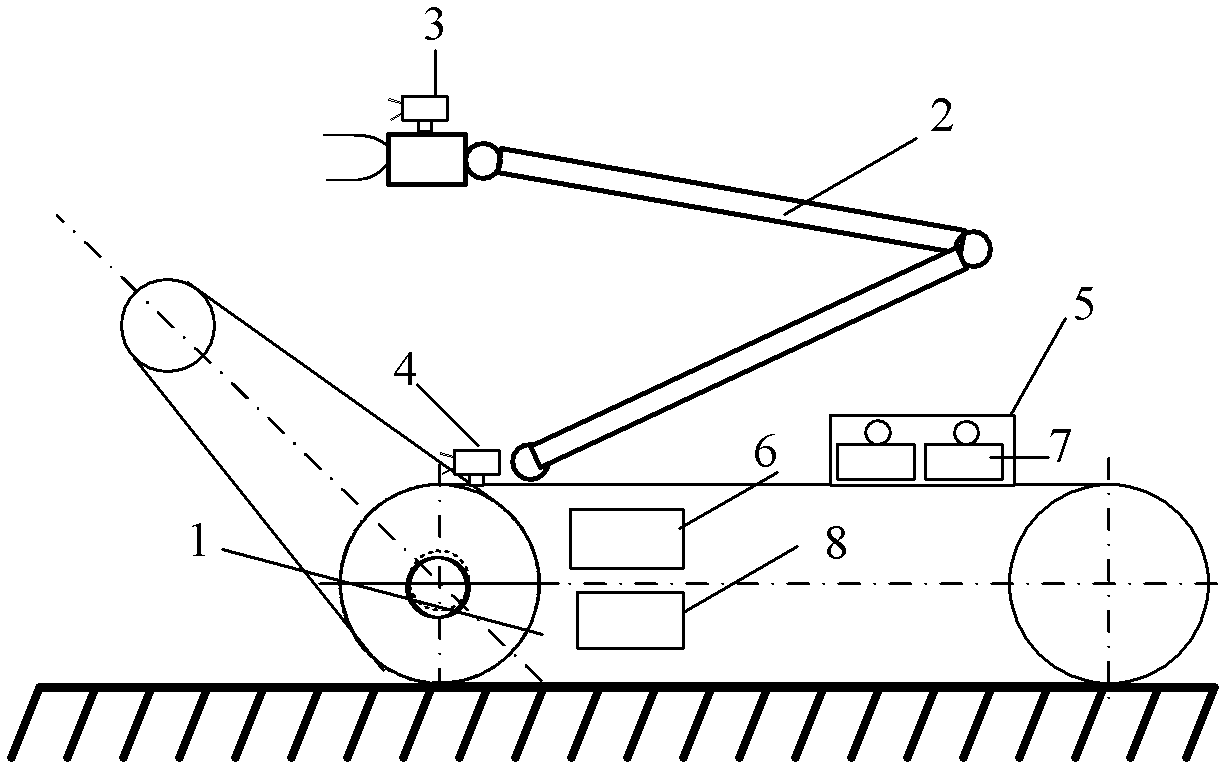Method for distributing wireless sensor nodes for nuclear pollution detection
A wireless sensor and nuclear detection technology, applied in the field of nuclear pollution detection, can solve the problems of consuming precious time, low work efficiency, long work time, etc., and achieve the effect of avoiding path duplication, improving work efficiency and improving work efficiency.
- Summary
- Abstract
- Description
- Claims
- Application Information
AI Technical Summary
Problems solved by technology
Method used
Image
Examples
Embodiment Construction
[0019] The method for distributing nuclear pollution detection wireless sensor nodes of the present invention will be described in detail below in conjunction with the accompanying drawings and specific embodiments.
[0020] Such as figure 1 As shown, a manipulator 2, a first camera 3, a second camera 4, a nuclear detector 8 and a GPS positioning navigator 6 are installed on the ground high-mobility mobile reconnaissance robot 1, and a nuclear detection wireless sensor node 7 and a box 5 are carried. The detector 8 and the GPS positioning navigator 6 are installed in the robot 1, the manipulator 2 is installed on the front end of the mobile reconnaissance robot 1, the first camera 3 is installed on the end of the manipulator, the second camera 4 is installed on the head of the mobile reconnaissance robot, and the nuclear detection wireless sensor There is a key-type power switch on the node 7, and the nuclear detection wireless sensor node 7 is stored in the box 5.
[0021] S...
PUM
 Login to View More
Login to View More Abstract
Description
Claims
Application Information
 Login to View More
Login to View More - R&D
- Intellectual Property
- Life Sciences
- Materials
- Tech Scout
- Unparalleled Data Quality
- Higher Quality Content
- 60% Fewer Hallucinations
Browse by: Latest US Patents, China's latest patents, Technical Efficacy Thesaurus, Application Domain, Technology Topic, Popular Technical Reports.
© 2025 PatSnap. All rights reserved.Legal|Privacy policy|Modern Slavery Act Transparency Statement|Sitemap|About US| Contact US: help@patsnap.com



